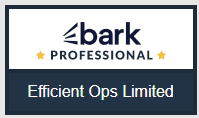Dissecting Employment Legislation - Flexible Working
Dissecting Employment Legislation - Flexible Working
Almost exactly ten years since originally coming into force, Flexible Working Regulations are being overhauled in 2024.
The key changes are as follows:
Length of Service - The right to submit a flexible working request has been reduced from 26 weeks service to day 1.
Frequency of Requests - An employee can now submit 2 rather than 1 request in a 12-month period.
Decision Timeline - The timescale in which employers must communicate the final decision has been reduced from 3 to 2 months.
Request Information - Employees are no longer required to identify the business impact and suggest mitigations in their formal request.
Coming into Force: 6th April 2024
What types of flexible working could be requested?
A flexible working request could take any form. It really depends on the individual employee’s needs. This could involve a reduction in hours, change in work pattern, home or hybrid working, annualised hours or even phased retirement.
How much time needs to elapse between requests?
There is no set rule on this. Employees can only have one flexible working request live at any given time. If this is the first request in a 12-month period then the employee can submit another request immediately after the decision has been communicated.
Can an employee submit the same request again?
Yes, provided they haven’t already submitted 2 requests within the last 12 months, then an employee can submit the same request again. As the business landscape may have changed since the last request, it should be considered as a standalone request.
Is consultation necessary if we are happy to accept the request in full?
No. If the request is approved, then you can simply confirm this in writing to the employee and prepare the necessary paperwork to confirm the contract change. This must be done within 2 months of the request.
Does an employee have a statutory right to be accompanied at the consultation meeting?
There is no statutory right to be accompanied, but it is recommended if this would benefit the employee in putting forward their case.
What should be discussed at the consultation meeting?
The meeting should cover the potential benefits or impacts of accepting or rejecting the request both on the employee and the business. It should also discuss any practical changes that would need to be in place before the request can be implemented.
Is it possible to suggest a modification to the request?
Yes. This is the intention of the consultation meeting. If the employer has a good reason to reject the original request in full, then it is reasonable to discuss alternative ways in which the employee’s desired flexibility can be achieved. This could also involve an agreed trial period.
What are ‘reasonable’ grounds to reject a flexible working request?
Legislation states that it is only possible to reject a request for one of the following business reasons:
the burden of additional costs
an inability to reorganise work amongst existing staff
an inability to recruit additional staff
a detrimental impact on quality
a detrimental impact on performance
a detrimental effect on ability to meet customer demand
insufficient work for the periods the employee proposes to work
a planned structural change to your business
Is it possible to cancel the request if the employee doesn’t attend the consultation meeting?
It is only possible to treat an application as withdrawn if an employee misses 2 pre-arranged consultation meetings without good reason. In this scenario, there must be evidence that the employee received a formal written invite to both meetings. The employer must write to the employee to advise them that they are treating the request as withdrawn.
Should employees be given the right to appeal the decision?
There is no statutory right to appeal a decision for a flexible working request, but it is good practice. It enables the employee to communicate if they feel the request wasn’t appropriately handled or propose any adjustment that would mitigate the reason for rejection.
The appeal should be heard by another ideally more senior manager and a final decision communicated in writing within 2 months of the original request.
Can the 2-month period in which to communicate the final decision be extended?
This is only possible with explicit agreement between Employer and employee. This must be confirmed to the employee in writing with the updated decision date.
Planning for the change
Update your employee handbook or flexible working policy with the key changes
Create/ update flexible working request form to ensure all the required information is provided upfront:
the date of the request
the change the employee is requesting to the terms and conditions of their employment in relation to their hours, times or place of work
the date the employee would like the change to come into effect
if and when the employee has made a previous request for flexible working to the employer





